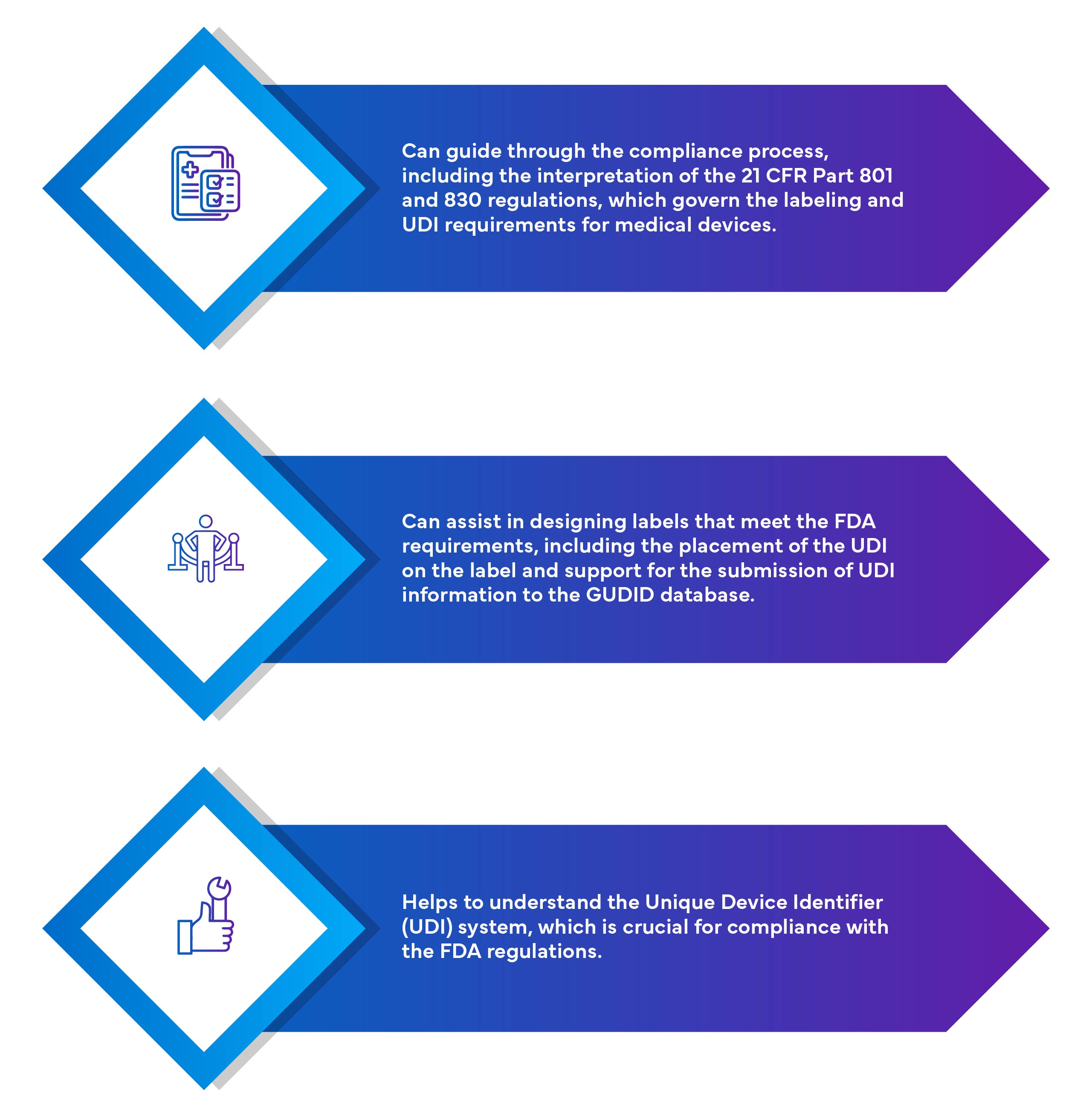UDI and GUDID Solutions for the FDA Compliance Overview
The Unique Device Identification (UDI) Rule, enacted by the US Food and Drug Administration (FDA) and published in the US Federal Register on September 24, 2013, mandates Unique Device Identification (UDI) requirements for medical devices. This regulation establishes a uniform system for device identification and associated information, serving multiple public health objectives, notably aiding the FDA's Post-market Surveillance (PMS) efforts. Compliance with UDI requirements are obligatory for manufacturers seeking to market their products in the United States.
A Unique Device Identifier (UDI) is a series of numeric or alphanumeric characters that is created through a globally accepted device identification and coding standard for unambiguous identification of a specific medical device on the market. The UDI is comprised of two (02) parts: the Device Identifier (UDI-DI) and the Production Identifier (UDI-PI). The UDI system is designed to enhance the traceability of medical devices, improve patient safety, and ensure that the devices are properly identified and used. The manufacturer can obtain the UDI from the FDA accredited UDI issuing agencies GS1, HIBCC, and ICCBBA.

GUDID (Global Unique Device Identification Database) is a central repository of detailed medical device information created by the FDA. It serves as a key Regulatory requirement for medtech manufacturers marketing In Vitro Diagnostics (IVDs) or medical devices in the United States. GUDID contains essential information about each device. It is designed to help identify and trace all medical devices sold in the U.S., providing a digital hub for UDI (Unique Device Identification) information. Manufacturers are requested to electronically submit all UDI information to GUDID, ensuring that accurate and up-to-date data is available to regulators, healthcare providers, insurers, and the public.
Freyr has an in-house office in the United States with medical device Regulatory experts and resources to assist you in establishing compliance processes to meet the US FDA UDI requirements. For expert assistance, contact Freyr's specialists.
What is a DUNS Number?
To submit UDI information to the FDA’s Electronic Submissions Gateway (ESG), domestic and foreign manufacturers must have their own unique D-U-N-S Number. The DUNS (Data Universal Numbering System) Number is a distinctive nine-digit identifier utilized for tracking businesses. Widely acknowledged as the global standard for business identification, the DUNS Number enables potential customers and suppliers to access comprehensive company information gathered by Dun & Bradstreet, a leading provider of business and commercial data. The FDA mandates that all DUNS number details must be precise and up- to -datefor a company's medical device registrations and UDI submissions to be accepted. Failure to furnish a valid DUNS number can lead to the revocation of a facility's registration.
Freyr UDI and GUDID Competencies:
![]()
Account creation with UDI issuing agencies.![]()
UDI/Barcode generation.![]()
GUDID account creation/Support for GUDID account creation.![]()
UDI data submission support with the GUDID database.
Frequently Asked Questions (FAQs)
The UDI-DI is a mandatory, fixed portion of the UDI that identifies the specific version or model of a device and the labeler of that device. It is used as the 'access key' to information stored in a UDI database and is the data that allows the linking of device information across other systems.
The UDI-PI is a conditional, variable portion of the UDI that identifies the unit of device production and may include information such as the lot or batch number, serial number, expiration date, and date of manufacture, among others.
A labeler must first request a GUDID account to submit UDI information for devices. The process for requesting an account is available on the FDA's UDI website.
The UDI must be placed on the device label, device packages, and, for devices intended to be used more than once and reprocessed between uses, on the device itself.
All stand-alone software, whether packaged or unpackaged (e.g., software downloaded from a website), must provide its UDI.
Medical Device Regulatory Consulting – Proven Expertise
Why Freyr?

